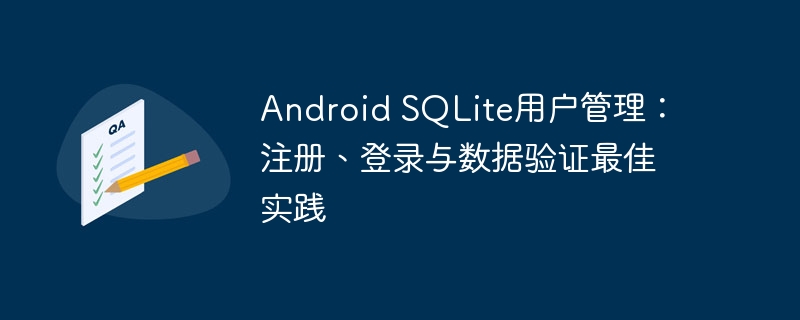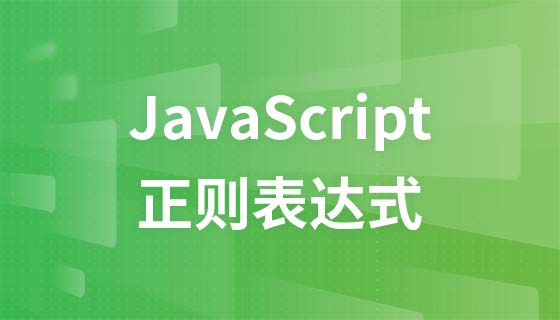AndroidSQLite用户注册登录验证教程
时间:2025-07-30 21:51:33 188浏览 收藏
本文针对Android SQLite数据库用户管理中常见的注册登录问题,提供了一套完整的解决方案和最佳实践。主要聚焦于用户名唯一性验证、电话号码数据类型选择、Activity跳转管理以及数据库模式更新等关键环节。通过优化后的代码示例,详细阐述了如何利用`UNIQUE`约束保证用户名唯一,使用`TEXT`类型存储电话号码避免溢出,以及如何正确处理数据库升级。同时,强调了`finish()`方法在注册登录流程中的应用,优化Activity栈管理。旨在帮助开发者构建更健壮、高效的Android用户管理系统,提升数据操作的可靠性和用户体验的流畅性。对于Android开发者来说,本文是一份实用的SQLite用户管理教程,能够有效避免常见错误,提升应用质量。

在Android应用开发中,使用SQLite数据库进行本地用户数据管理是常见的需求。这通常涉及用户注册、登录验证以及相关数据(如用户名、密码、邮箱、电话)的存储与查询。然而,在实际开发过程中,开发者可能会遇到一些逻辑错误或数据类型不匹配的问题,导致功能异常或潜在的数据完整性风险。本教程将针对这些常见问题,提供专业的解决方案和最佳实践。
1. 数据库辅助类(DatabaseHelper)设计
SQLiteOpenHelper 是Android中管理SQLite数据库创建和版本升级的核心类。我们需要定义数据库名称、表结构以及数据操作方法。
public class DatabaseHelper extends SQLiteOpenHelper {
public static final String DATABASE_NAME = "login.db";
public static final int DATABASE_VERSION = 1; // 数据库版本号
public DatabaseHelper(Context context) {
super(context, DATABASE_NAME, null, DATABASE_VERSION);
}
@Override
public void onCreate(SQLiteDatabase db) {
// 创建用户表,注意phone字段的数据类型和username的UNIQUE约束
db.execSQL("CREATE TABLE user(ID INTEGER PRIMARY KEY AUTOINCREMENT, username TEXT UNIQUE, password TEXT, email TEXT, phone TEXT)");
}
@Override
public void onUpgrade(SQLiteDatabase db, int oldVersion, int newVersion) {
// 数据库升级逻辑:通常是删除旧表并重新创建,或者执行ALTER TABLE语句
db.execSQL("DROP TABLE IF EXISTS user");
onCreate(db);
}
/**
* 插入用户数据
* @param username 用户名
* @param password 密码
* @param email 邮箱
* @param phone 电话号码 (使用String类型)
* @return 插入成功返回true,失败返回false
*/
public boolean insertUser(String username, String password, String email, String phone){
SQLiteDatabase sqLiteDatabase = this.getWritableDatabase();
ContentValues contentValues = new ContentValues();
contentValues.put("username", username);
contentValues.put("password", password);
contentValues.put("email", email);
contentValues.put("phone", phone); // 电话号码作为文本存储
long result = -1;
try {
result = sqLiteDatabase.insert("user", null, contentValues);
} catch (SQLiteConstraintException e) {
// 捕获唯一约束冲突异常,例如用户名已存在
Log.e("DatabaseHelper", "Error inserting user: " + e.getMessage());
return false;
} finally {
// 确保数据库连接被关闭 (如果getWritableDatabase返回的是新实例,则需要手动关闭)
// 通常SQLiteOpenHelper会自动管理,但良好的习惯是考虑资源释放
// sqLiteDatabase.close(); // 在这里关闭可能导致后续操作问题,通常由系统管理
}
return result != -1;
}
/**
* 检查用户名是否已存在
* @param username 待检查的用户名
* @return 如果用户名已存在返回true,否则返回false
*/
public boolean checkUsernameExists(String username){
SQLiteDatabase sqLiteDatabase = this.getReadableDatabase();
// 使用DatabaseUtils.longForQuery更高效地获取计数
long count = DatabaseUtils.longForQuery(sqLiteDatabase, "SELECT count(*) FROM user WHERE username=?", new String[]{username});
return count >= 1;
}
/**
* 检查用户登录凭据
* @param username 用户名
* @param password 密码
* @return 登录凭据匹配返回true,否则返回false
*/
public boolean checkLoginCredentials(String username, String password){
SQLiteDatabase sqLiteDatabase = this.getReadableDatabase();
Cursor cursor = null;
try {
cursor = sqLiteDatabase.rawQuery("SELECT * FROM user WHERE username=? AND password=?", new String[]{username, password});
return cursor.getCount() > 0;
} finally {
if (cursor != null) {
cursor.close(); // 确保Cursor被关闭
}
}
}
}关键改进点:
- onCreate方法:
- username TEXT UNIQUE: 为username字段添加UNIQUE约束。这将在数据库层面强制保证用户名的唯一性,避免重复注册。当尝试插入重复用户名时,SQLite会抛出SQLiteConstraintException,这比在应用逻辑中手动检查更健壮。
- phone TEXT: 将phone字段的数据类型从INTEGER更改为TEXT。Java的int类型最大值是2,147,483,647,无法存储所有10位或更多位的电话号码(如9999999999)。将电话号码作为文本存储可以避免溢出问题,并能保留前导零(例如,某些国家电话号码可能以0开头)。
- onUpgrade方法: 这是一个数据库版本升级的回调方法。当DATABASE_VERSION增加时,此方法会被调用。示例中采取了简单粗暴的策略:删除旧表并重新创建。在生产环境中,更推荐使用ALTER TABLE语句来保留现有数据并仅添加新列或修改现有列。
- insertUser方法:
- 现在接受phone为String类型。
- 添加了try-catch块来捕获SQLiteConstraintException,以便在UNIQUE约束冲突时(如用户名已存在)进行适当处理,并返回false。
- checkUsernameExists方法:
- 修正了原逻辑。原逻辑在用户名存在时返回false,这与“检查用户名是否存在”的语义不符。现在,如果用户名存在,则返回true。
- 推荐使用DatabaseUtils.longForQuery()方法来检查记录是否存在或计数。这种方法比rawQuery并遍历Cursor更高效,因为它直接返回一个long值(计数),无需创建和管理Cursor对象。
- checkLoginCredentials方法: 确保在finally块中关闭Cursor,以避免资源泄露。
2. 注册Activity(Register.java)逻辑优化
注册界面负责收集用户输入并将其存储到数据库中。
public class Register extends AppCompatActivity {
EditText user, pass, email, phone;
Button register;
DatabaseHelper databaseHelper;
@Override
protected void onCreate(Bundle savedInstanceState) {
super.onCreate(savedInstanceState);
setContentView(R.layout.activity_register); // 假设你的布局文件是activity_register
databaseHelper = new DatabaseHelper(this);
user = findViewById(R.id.username_reg); // 假设你的EditText ID
pass = findViewById(R.id.password_reg);
email = findViewById(R.id.email_reg);
phone = findViewById(R.id.phone_reg);
register = findViewById(R.id.btn_register);
register.setOnClickListener(new View.OnClickListener() {
@Override
public void onClick(View view) {
String username = user.getText().toString().trim();
String password = pass.getText().toString().trim();
String userEmail = email.getText().toString().trim();
String userPhone = phone.getText().toString().trim(); // 直接获取String
// 简单的输入验证
if (username.isEmpty() || password.isEmpty() || userEmail.isEmpty() || userPhone.isEmpty()) {
Toast.makeText(getApplicationContext(), "所有字段都不能为空!", Toast.LENGTH_SHORT).show();
return;
}
// 检查用户名是否已存在
if (databaseHelper.checkUsernameExists(username)) {
Toast.makeText(getApplicationContext(), "用户名已被占用!", Toast.LENGTH_SHORT).show();
} else {
// 插入用户数据
boolean insertSuccess = databaseHelper.insertUser(username, password, userEmail, userPhone);
if (insertSuccess) {
Toast.makeText(getApplicationContext(), "注册成功!", Toast.LENGTH_SHORT).show();
// 注册成功后返回登录界面或主界面
// 使用 finish() 而不是 startActivity(new Intent(...)) 来返回上一个Activity
finish();
} else {
Toast.makeText(getApplicationContext(), "注册失败,请重试!", Toast.LENGTH_SHORT).show();
}
}
}
});
}
}关键改进点:
- 电话号码处理: 直接获取String类型的电话号码,无需进行Integer.parseInt()转换,避免了因非数字输入或数值溢出导致的崩溃。
- 输入非空验证: 在执行数据库操作前,添加了基本的输入字段非空验证,提升用户体验。
- checkUsernameExists逻辑: 根据DatabaseHelper中的修正,这里直接判断返回true表示用户名已存在。
- Activity跳转:
- 注册成功后,使用finish()方法来结束当前Register Activity并返回到调用它的上一个 Activity(通常是登录或主 Activity)。
- 使用startActivity(new Intent(Register.this, MainActivity.class))会启动一个新的MainActivity实例,而不是返回到已存在的实例,这可能导致Activity栈混乱和不必要的资源消耗。
3. 登录Activity(Login.java)逻辑优化
登录界面负责验证用户输入的凭据。
public class Login extends AppCompatActivity {
EditText username, password;
Button login;
DatabaseHelper databaseHelper;
@Override
protected void onCreate(Bundle savedInstanceState) {
super.onCreate(savedInstanceState);
setContentView(R.layout.activity_login); // 假设你的布局文件是activity_login
databaseHelper = new DatabaseHelper(this);
username = findViewById(R.id.username_login); // 假设你的EditText ID
password = findViewById(R.id.password_login);
login = findViewById(R.id.btn_login);
login.setOnClickListener(new View.OnClickListener() {
@Override
public void onClick(View view) {
String user = username.getText().toString().trim();
String pass = password.getText().toString().trim();
if (user.isEmpty()) {
Toast.makeText(getApplicationContext(), "用户名不能为空!", Toast.LENGTH_SHORT).show();
return; // 立即返回
}
if (pass.isEmpty()) {
Toast.makeText(getApplicationContext(), "密码不能为空!", Toast.LENGTH_SHORT).show();
return; // 立即返回
}
// 检查登录凭据
if (databaseHelper.checkLoginCredentials(user, pass)) {
Toast.makeText(getApplicationContext(), "登录成功!", Toast.LENGTH_SHORT).show();
// 登录成功后跳转到主页
Intent homeIntent = new Intent(Login.this, Home.class); // 假设你的主页是Home.class
startActivity(homeIntent);
finish(); // 登录成功后关闭登录界面,防止用户返回
} else {
Toast.makeText(getApplicationContext(), "无效的用户名或密码!", Toast.LENGTH_SHORT).show();
}
}
});
}
}关键改进点:
- 输入验证顺序: 优先检查用户名和密码是否为空,如果为空则直接提示并返回,避免不必要的数据库查询。
- Activity跳转: 登录成功后,跳转到主页Home.class,并使用finish()关闭当前的Login Activity,防止用户通过返回键回到登录界面。
4. 数据库模式更新注意事项
当您修改了onCreate方法中的表结构(例如,添加了email和phone字段),但应用程序已经运行过旧版本时,onCreate方法不会再次执行。这就是为什么您在添加新字段后“什么都没发生”的原因,因为数据库中对应的表并没有更新。
要强制更新数据库模式,您需要:
- 增加DATABASE_VERSION: 在DatabaseHelper类中,将public static final int DATABASE_VERSION的值增加(例如从1改为2)。
- 卸载并重新安装应用: 这是最简单粗暴的方法,它会删除旧的数据库文件,然后在新版本应用首次启动时,onCreate方法会被调用,从而创建带有新字段的表。
- 实现onUpgrade逻辑: 在生产环境中,更优雅的做法是在onUpgrade方法中编写数据库迁移逻辑,例如使用ALTER TABLE ADD COLUMN语句来添加新列,而不是直接删除并重建表,这样可以保留用户已有的数据。
// 示例:在onUpgrade中添加新列
@Override
public void onUpgrade(SQLiteDatabase db, int oldVersion, int newVersion) {
if (oldVersion < 2) {
// 从版本1升级到版本2,添加email和phone列
db.execSQL("ALTER TABLE user ADD COLUMN email TEXT");
db.execSQL("ALTER TABLE user ADD COLUMN phone TEXT");
}
// 如果有更多版本升级,可以继续添加 if (oldVersion < X) { ... }
}注意: 在实际应用中,如果username字段没有在初始版本就设置为UNIQUE,而是在后续版本中添加,ALTER TABLE可能无法直接添加UNIQUE约束到已有数据的列上,或者需要更复杂的迁移策略(如创建新表、迁移数据、删除旧表、重命名新表)。因此,在设计初期就考虑好字段约束非常重要。
总结
通过以上改进,我们解决了Android SQLite用户管理中常见的几个问题:
- 用户名唯一性检查逻辑: 修正了checkUsernameExists方法的返回逻辑,并推荐使用DatabaseUtils.longForQuery提高效率。
- 电话号码数据类型: 将phone字段从INTEGER改为TEXT,以支持更长的号码和保留前导零,并避免Java int溢出。
- 数据库模式更新: 强调了onCreate和onUpgrade的区别,以及在表结构变化时如何正确更新数据库。
- Activity跳转管理: 明确了在注册成功后使用finish()返回上一个Activity,而非启动新实例,优化了Activity栈管理。
- 数据完整性: 建议在数据库层面通过UNIQUE约束来强制保证用户名的唯一性,增强数据可靠性。
遵循这些最佳实践,可以帮助您构建更健壮、更高效的Android SQLite用户管理系统。
理论要掌握,实操不能落!以上关于《AndroidSQLite用户注册登录验证教程》的详细介绍,大家都掌握了吧!如果想要继续提升自己的能力,那么就来关注golang学习网公众号吧!
-
501 收藏
-
501 收藏
-
501 收藏
-
501 收藏
-
501 收藏
-
367 收藏
-
155 收藏
-
411 收藏
-
430 收藏
-
293 收藏
-
215 收藏
-
435 收藏
-
144 收藏
-
238 收藏
-
469 收藏
-
500 收藏
-
465 收藏
-

- 前端进阶之JavaScript设计模式
- 设计模式是开发人员在软件开发过程中面临一般问题时的解决方案,代表了最佳的实践。本课程的主打内容包括JS常见设计模式以及具体应用场景,打造一站式知识长龙服务,适合有JS基础的同学学习。
- 立即学习 543次学习
-

- GO语言核心编程课程
- 本课程采用真实案例,全面具体可落地,从理论到实践,一步一步将GO核心编程技术、编程思想、底层实现融会贯通,使学习者贴近时代脉搏,做IT互联网时代的弄潮儿。
- 立即学习 516次学习
-

- 简单聊聊mysql8与网络通信
- 如有问题加微信:Le-studyg;在课程中,我们将首先介绍MySQL8的新特性,包括性能优化、安全增强、新数据类型等,帮助学生快速熟悉MySQL8的最新功能。接着,我们将深入解析MySQL的网络通信机制,包括协议、连接管理、数据传输等,让
- 立即学习 500次学习
-

- JavaScript正则表达式基础与实战
- 在任何一门编程语言中,正则表达式,都是一项重要的知识,它提供了高效的字符串匹配与捕获机制,可以极大的简化程序设计。
- 立即学习 487次学习
-

- 从零制作响应式网站—Grid布局
- 本系列教程将展示从零制作一个假想的网络科技公司官网,分为导航,轮播,关于我们,成功案例,服务流程,团队介绍,数据部分,公司动态,底部信息等内容区块。网站整体采用CSSGrid布局,支持响应式,有流畅过渡和展现动画。
- 立即学习 485次学习
